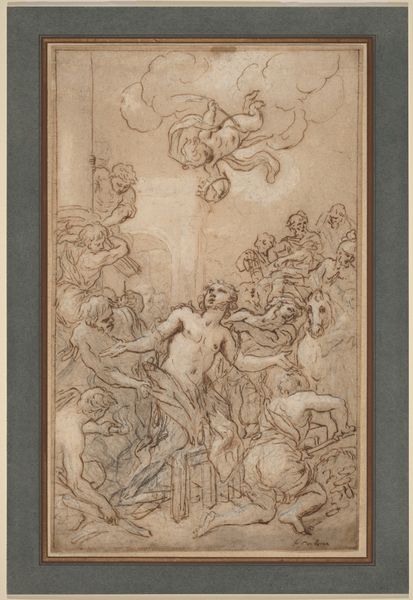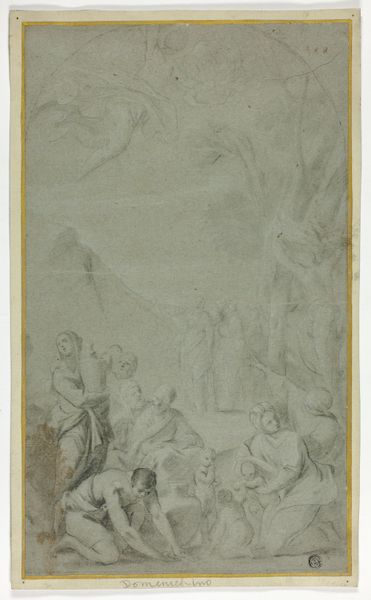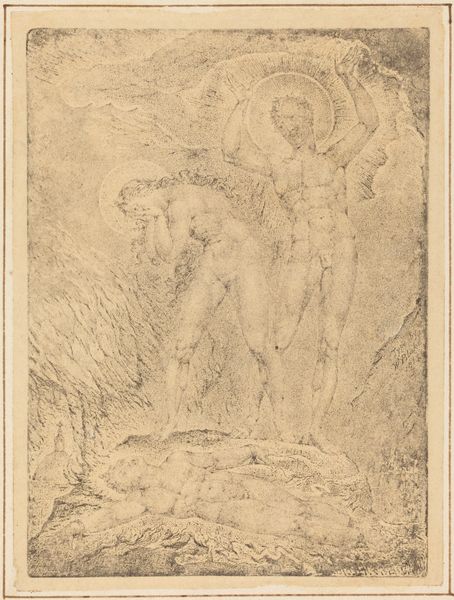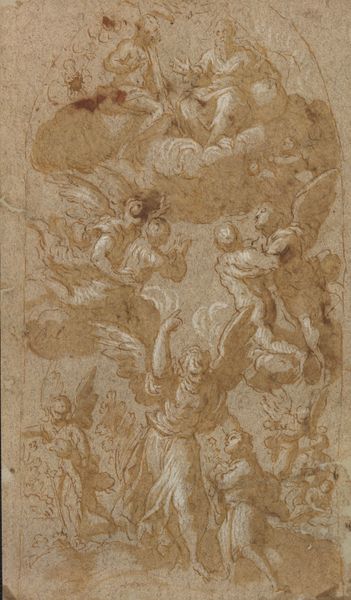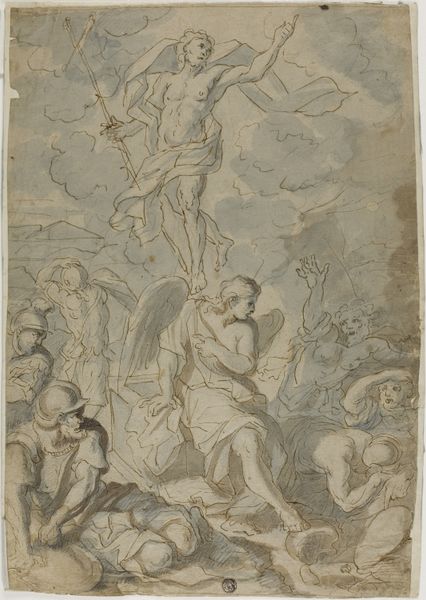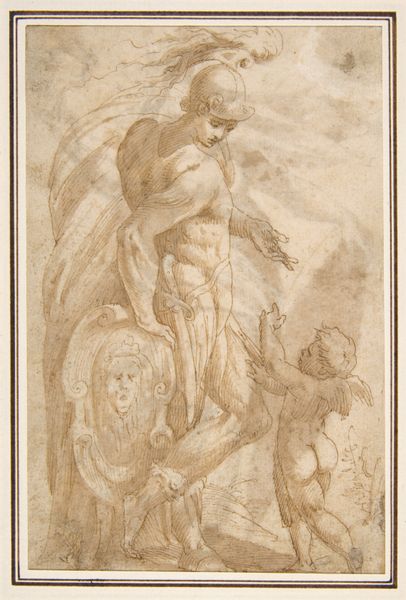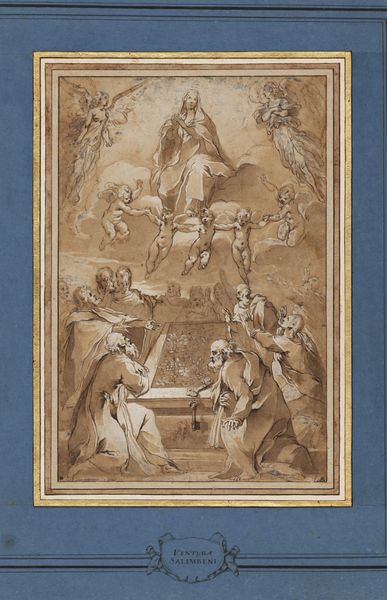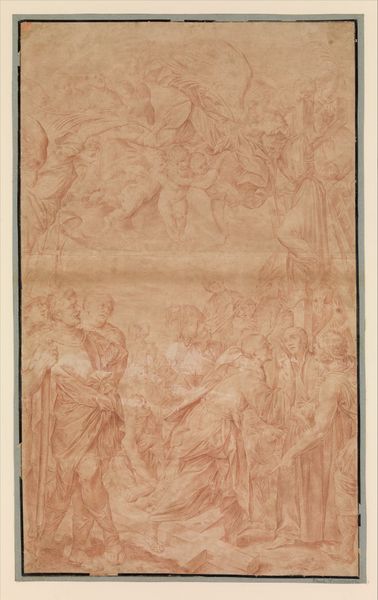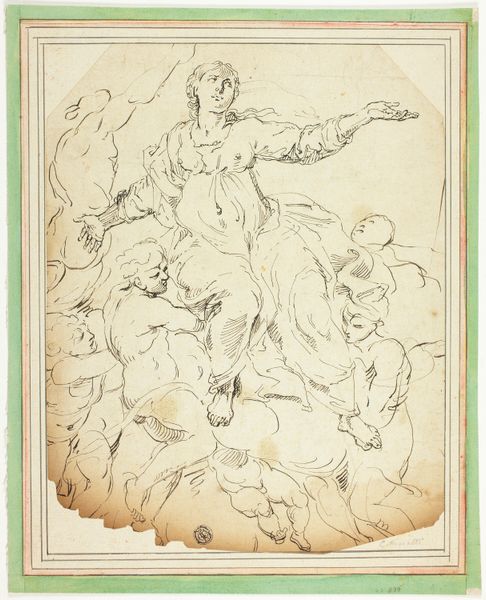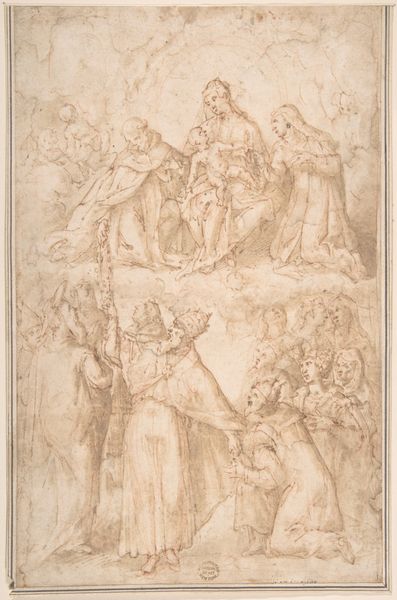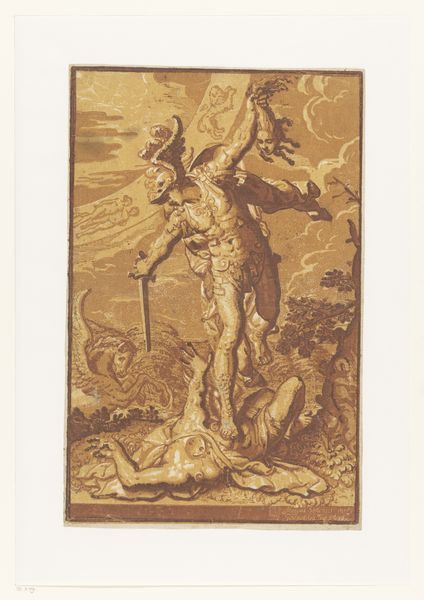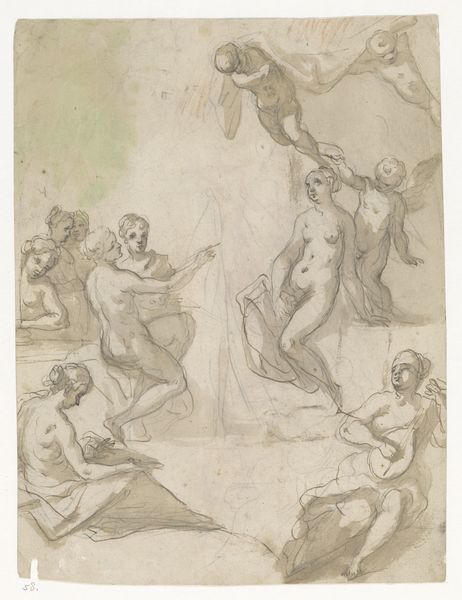
drawing, print
#
drawing
# print
#
figuration
#
11_renaissance
#
history-painting
#
academic-art
Dimensions: 22 1/16 x 16 in (56 x 40.50 cm)
Copyright: Public Domain
Curator: Looking at Santi di Tito's "The Resurrection", dating from about 1570 to 1590, you can almost feel the scene exploding off the paper. It’s currently held at the Metropolitan Museum of Art. The composition, though crowded, manages to direct the viewer's eye upward. Editor: Exploding is definitely the right word! The first thing I notice is the almost frantic energy, the swirling chaos around the risen figure. It's not the serene, peaceful resurrection I’m accustomed to seeing. More like a cosmic jailbreak. Curator: Well, keep in mind the Counter-Reformation was gaining strength. Mannerism, with its distorted forms and emotional intensity, was in vogue. Di Tito had to consider art’s role, how it moved viewers in communicating its message. We are certainly seeing his exploration of the style here. Editor: Definitely feeling that artistic license. Take the colour scheme, for instance—it's almost monochromatic, existing somewhere between brown, gray, and blue. It makes me think of a half-remembered dream. Everyone is there, but blurry around the edges. Also, a really interesting study in value; so much movement is rendered using tone and not distinct lines. Curator: The artist utilized what appears to be brown and gray washes along with highlights, giving the forms volume while allowing the viewer insight into process. As a work on paper, "The Resurrection" fits into a rich tradition of preparatory sketches and finished drawings which, when displayed in collections such as the Met's, show the ingenuity of Renaissance artists. Editor: And that’s so crucial—remembering that drawings like this were tools in a studio. Still, there is something really vulnerable about this medium, a freshness you don't always get with frescoes or oils. It allows us to access a certain side of Santi di Tito, unfiltered and maybe even more real. It is lovely to get this closer experience with art that feels simultaneously historical and, yet, somehow, personally created. Curator: A brilliant reminder that even historical works engage in the same process of mark-making, and of message making. It offers us today opportunities for connection in a new way. Editor: Beautifully put! That intersection between the historical weight and immediate personal impact? That's where art really breathes.
Comments
No comments
Be the first to comment and join the conversation on the ultimate creative platform.
